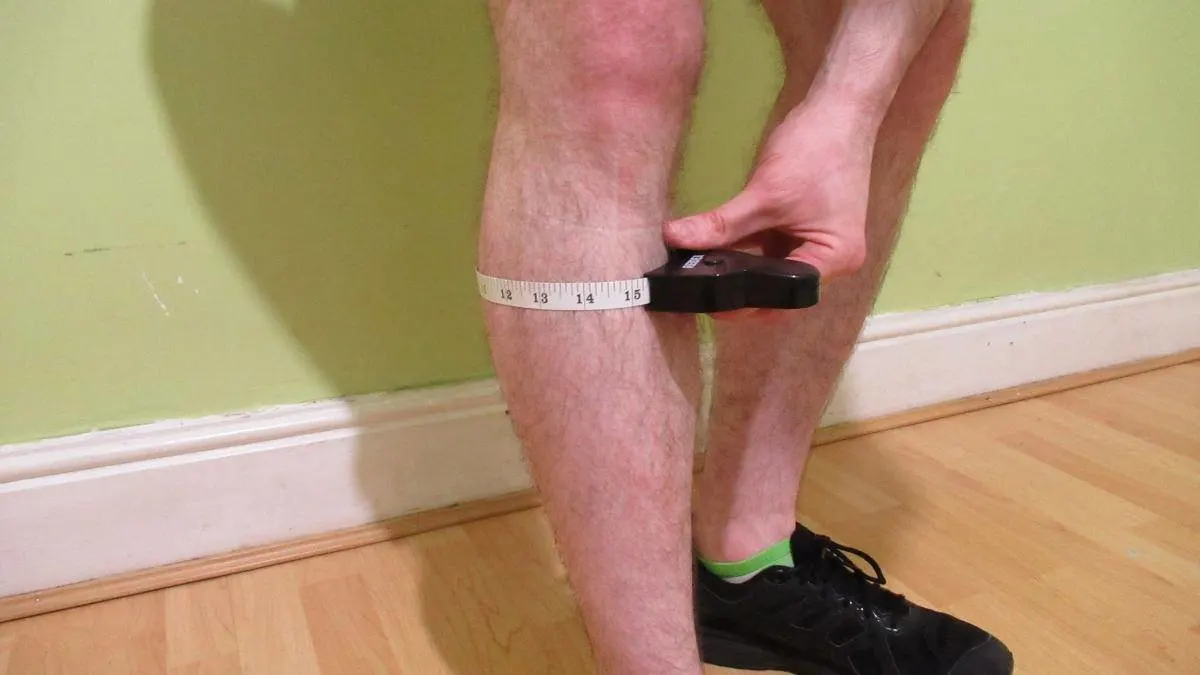Are 15 inch calves good for someone who lifts weights? Or are they just an average calf size?
As you’ll soon learn, whether or not your 15 inch calf circumference is impressive depends primarily on your height, build, gender, and body fat level.
This guide discusses who typically has 15″ calves and then explains how you can exceed your current measurement.
See How Your calves Compare:
Are 15 inch calves big or small?
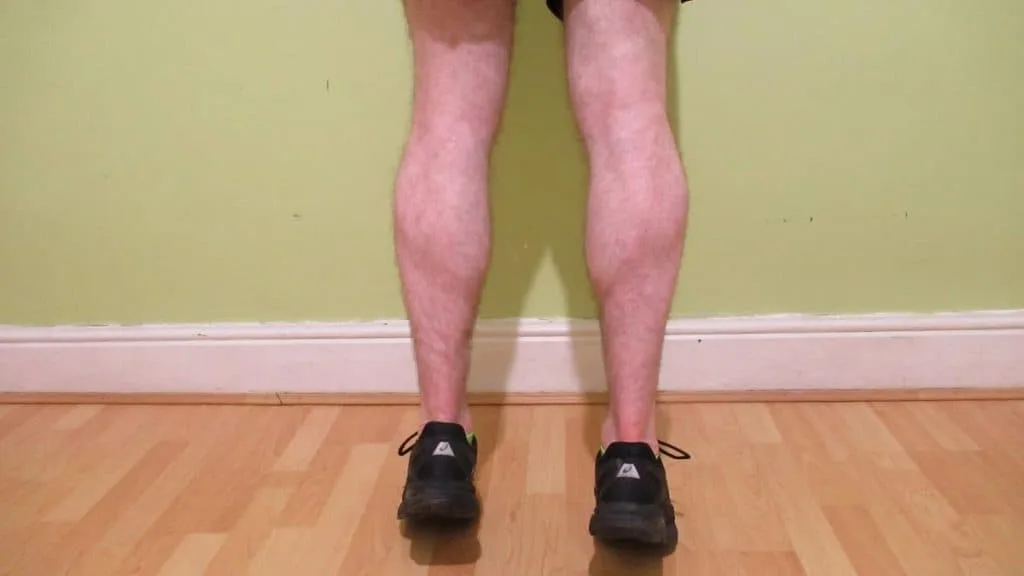
15 in calves are neither big nor small; they’re an average size for both men and women.
According to a National Health Statistics Report by the CDC, most men and women have 15 and 15.5 inch calves. [1]
Most of the participants in this 2008 study likely weren’t weight lifters. So if you train your calves directly and they’re still only 15 inches, then you could actually say that they’re on the small side.
Of course, if you’re short, let’s say between 5’5″ and 5’7″, then your calves might actually look pretty muscular at 15 inches.
The reason for this is that short people have smaller ankles and less bone mass than taller people. So at an equivalent circumference measurement, the short person’s calves will always look more muscular because they’re more filled out.
Additionally, if you’re of a normal height, have 15 in calves, but happen to be really lean (let’s say under 12% body fat), then your calves may actually look even bigger than they are due to them having more visible muscle definition.
How about 15.5 inch calves?
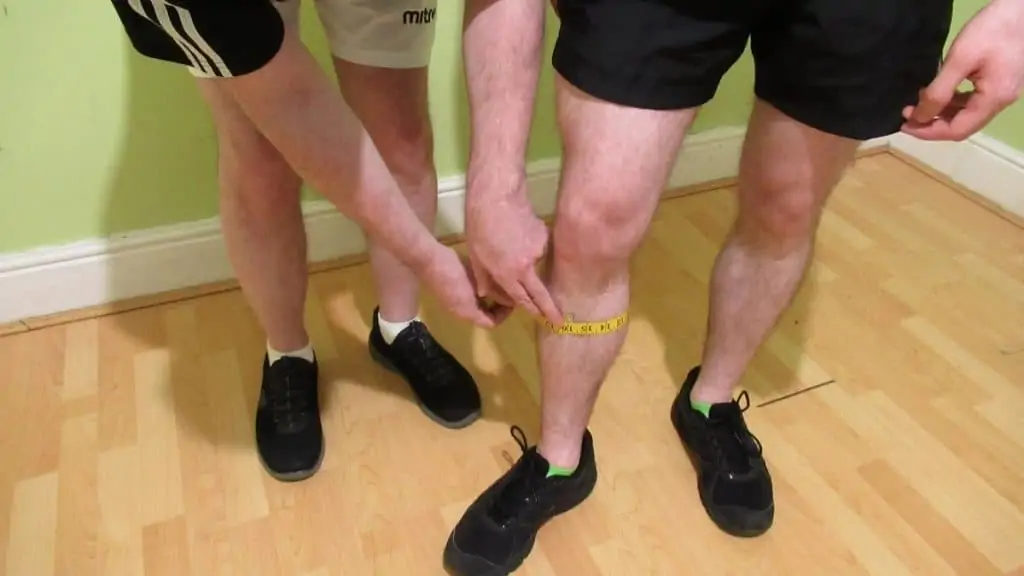
You might not think that there’s much difference between 15″ and 15.5″ calves. However, considering that the calves are a highly stubborn muscle group for many people, gaining half an inch on your lower legs can be extremely challenging.
Still, most men have calves that are around 15.5 inches. For women, the normal size tends to be closer to 15.0 inches.
As mentioned, your 15.5 inch calves will look more muscular if you have a low body fat level because you’ll be able to see more muscle definition. [2]
For women, a calf measurement of 15.5 inches is slightly above average but by no means abnormal. This is especially true considering that women tend to store more fat on their lower bodies than men.
How to exceed your 15 inch calf circumference
Many people can get a 15 inch calf circumference without doing a single calf raise. That’s because supporting your body weight while walking around and playing sports already provides a good amount of stimulus for the calves.
Weighted training
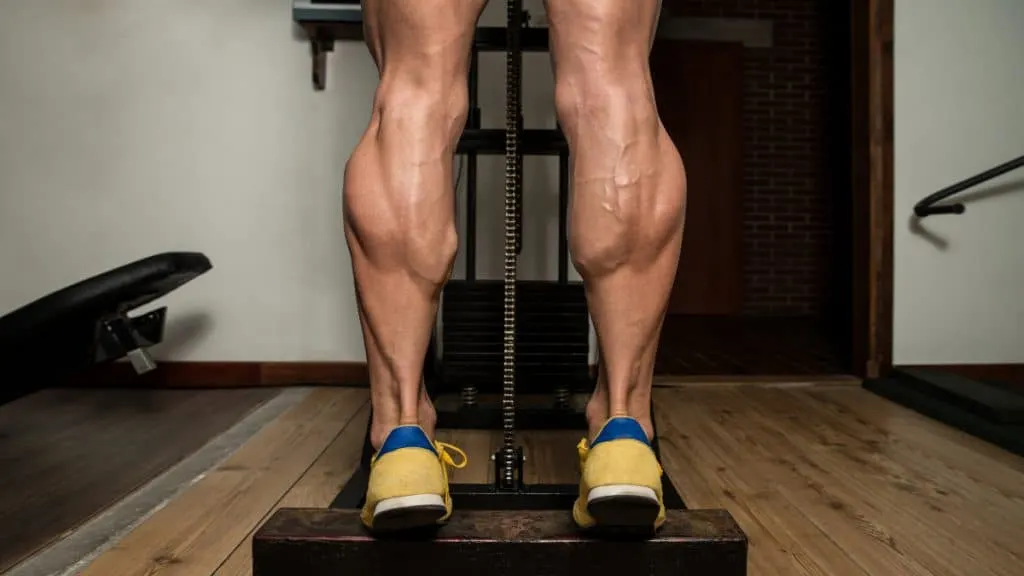
Walking, sports, and bodyweight training can build your calves up to a point, which for most people, is around 15 inches.
However, sooner or later, your calves will adapt to the stimulus and stop growing. This is where progressive weight training comes in.
Since your calves are already used to supporting your body weight while you walk around, you typically need to train them with external resistance if you want them to grow.
Of course, blasting your calves with tons of bodyweight calf raises is also a viable (if slightly painful) strategy for getting your lower legs to grow.
Most people, however, will get the best results by training their calves like they would any other muscle group, which is to say progressively and with weights. [3]
If you can do calf raises with more weight than you could 6 months ago—with the same quality of form—then it’s highly likely that your calves have grown. This is the essence of progressive resistance training.
Eating in a calorie surplus

Anyone who’s stepped foot in a gym (or even been for a walk in the park on a hot summer’s day) will know that people with larger body masses, whether that be composed of mainly fat tissue or muscle mass, tend to have larger calves than those with slimmer physiques.
This is primarily because putting on extra body weight makes all of your body parts at least slightly bigger.
After all, some of the body mass that you gain has to go to your calves!
Additionally, when you weigh more, your calves have to do more work in your everyday life. That’s one reason why overweight individuals can often have better calf development than recreational weight lifters.
Eating in a calorie surplus will also give you more energy in the gym. This extra energy will enable you to train your calves at a higher intensity and recover from your workouts faster.
Improving your lifting technique

If you can’t seem to make your 15 in calves grow despite your hard work in the gym, then it might be time to reduce the resistance and reevaluate your lifting technique.
Do you get a stronger pump in your feet than in your calves?
If so, then you should try to raise up onto the balls of your feet rather than onto your toes. Or, to say it another way, you should try to keep your ankles completely parallel with the ground (i.e., don’t let them flex from side to side).
Also, make sure that you challenge your calves with a proper stretch. It’s all well and good getting a powerful peak contraction, but if you skip the growth-stimulating eccentric calf stretch, then you’re robbing yourself of hypertrophy.
Sometimes it’s best to stick to bodyweight drills until you’ve mastered the form. After all, your calves don’t know how much weight you’re lifting—they just respond to tension.
Conclusion: Should you be satisfied with having 15 inch calves?
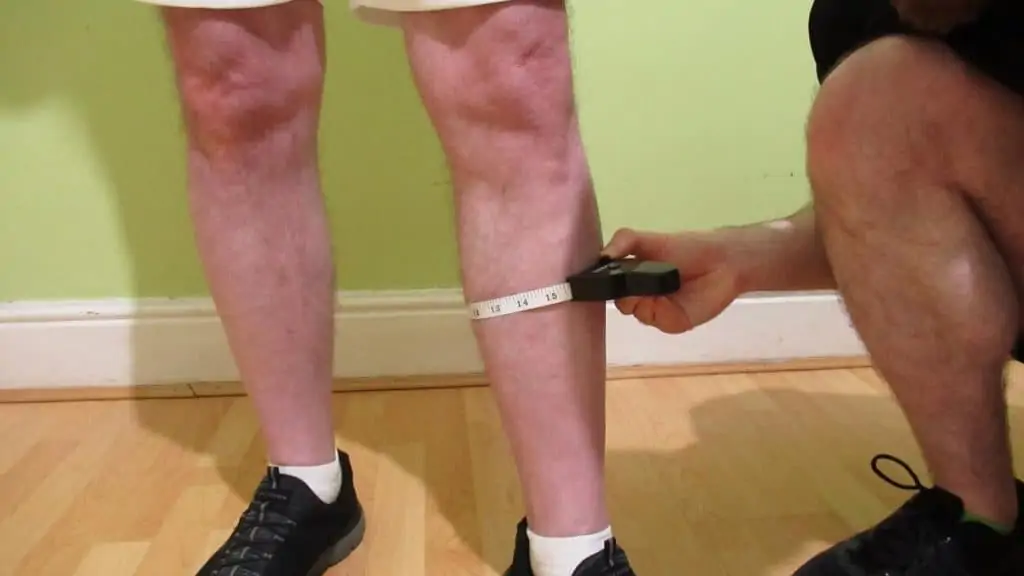
There’s absolutely nothing wrong with having 15 inch calves, regardless of whether you’re male or female, tall or short.
However, if you have a 15 inch calf measurement as a man despite training them hard and progressively, then it could be a sign that a) your training is ineffective or b) that you don’t have good calf genetics.
On the other hand, if you’re a woman who’s worried that her calves are too big, then you could perform cardiovascular activities (such as swimming or the elliptical) that are less lower leg intensive than the likes of the bike or treadmill.
References
- Centers for Disease Control and Prevention. (2008, October). Anthropometric Reference Data for Children and Adults: United States, 2003–2006 (No. 10). https://www.cdc.gov/nchs/data/nhsr/nhsr010.pdf
- Matthews, M. (2021, November 12). The Absolute Best Way to Improve Your Muscle Definition. Legion Athletics. https://legionathletics.com/muscle-definition/
- resistance training – Skeletal and body composition. (2022). Encyclopedia Britannica. https://www.britannica.com/topic/resistance-training/Skeletal-and-body-composition

